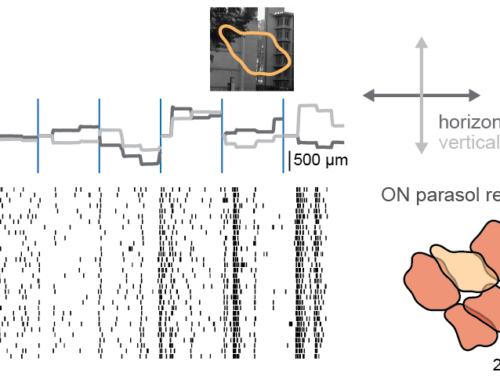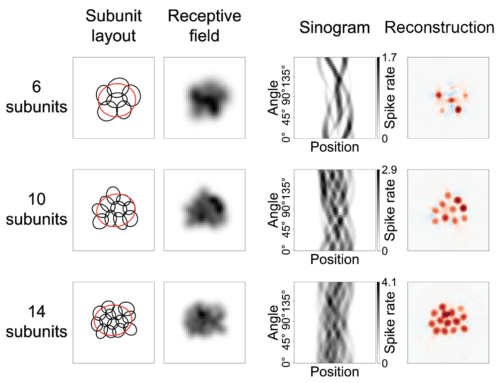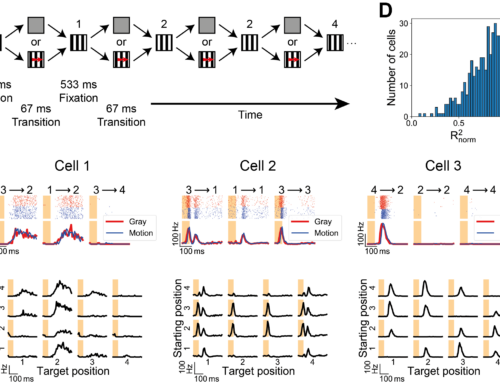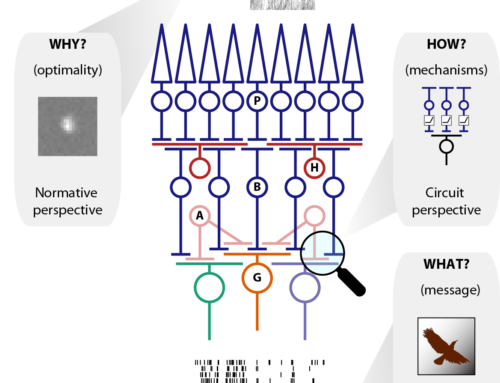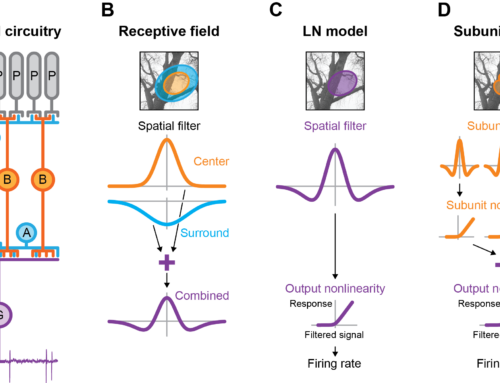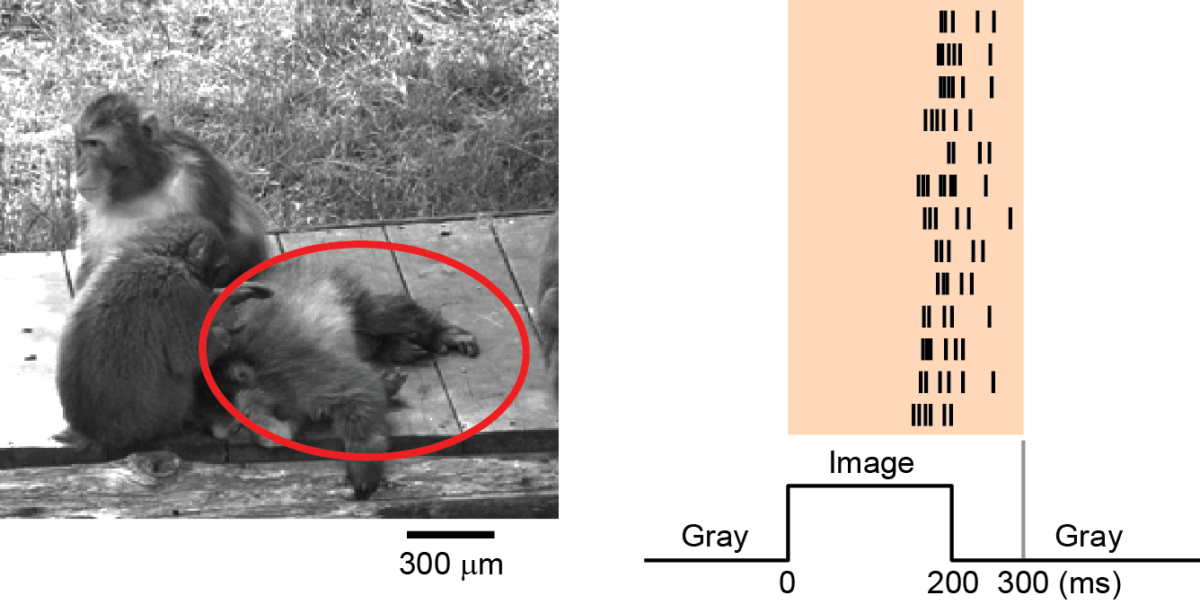
Simple model for encoding natural images by retinal ganglion cells with nonlinear spatial integration.
A central goal in sensory neuroscience is to understand the neuronal signal processing involved in the encoding of natural stimuli. A critical step towards this goal is the development of successful computational encoding models. For ganglion cells in the vertebrate retina, the development of satisfactory models for responses to natural visual scenes is an ongoing challenge. Standard models typically apply linear integration of visual stimuli over space, yet many ganglion cells are known to show nonlinear spatial integration, in particular when stimulated with contrast-reversing gratings. We here study the influence of spatial nonlinearities in the encoding of natural images by ganglion cells, using multielectrode-array recordings from isolated salamander and mouse retinas. We assess how responses to natural images depend on first- and second-order statistics of spatial patterns inside the receptive field. This leads us to a simple extension of current standard ganglion cell models. We show that taking not only the weighted average of light intensity inside the receptive field into account but also its variance over space can partly account for nonlinear integration and substantially improve response predictions of responses to novel images. For salamander ganglion cells, we find that response predictions for cell classes with large receptive fields profit most from including spatial contrast information. Finally, we demonstrate how this model framework can be used to assess the spatial scale of nonlinear integration. Our results underscore that nonlinear spatial stimulus integration translates to stimulation with natural images. Furthermore, the introduced model framework provides a simple, yet powerful extension of standard models and may serve as a benchmark for the development of more detailed models of the nonlinear structure of receptive fields.
